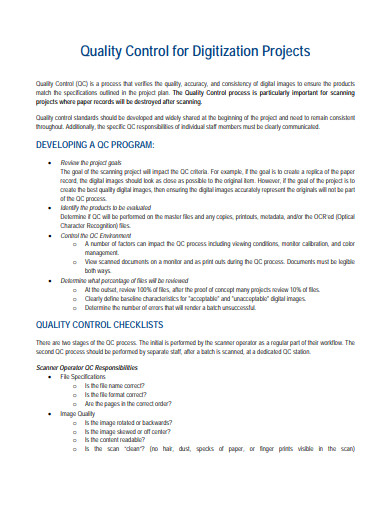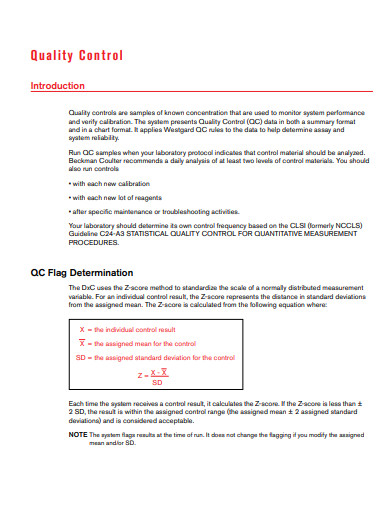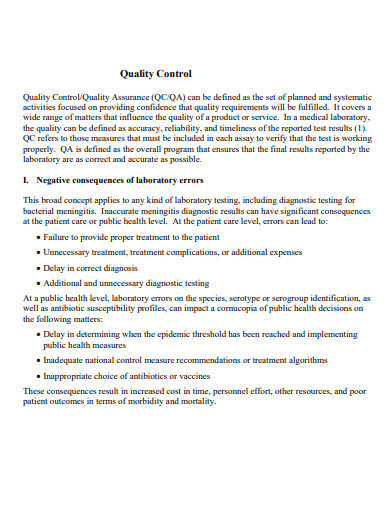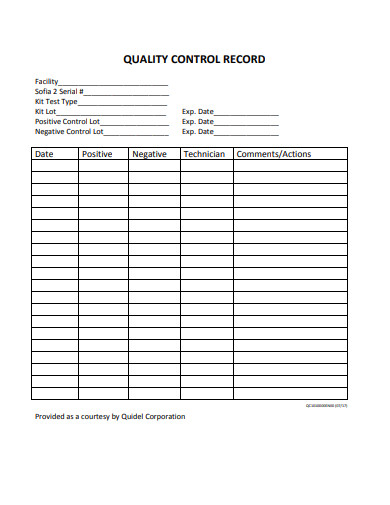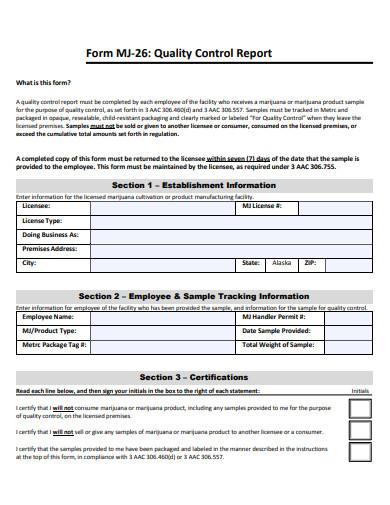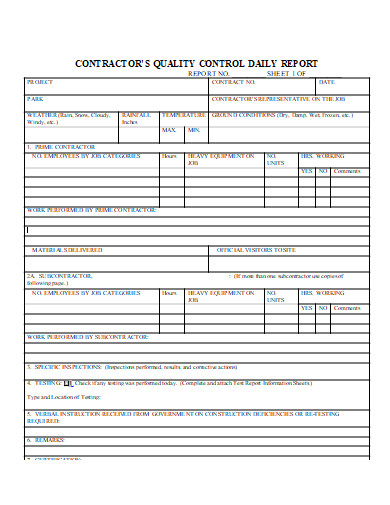Perhaps the most distinctive quality of any business or organization on the planet is its commitment to excellence. Any type of business or business owner that wishes to succeed strives to maintain a consistently high level of quality. Consideration may be given to the quality of products, services, and resources, to name a few. Ascertain that your entire output meets the expectations of investors, stakeholders, and, most importantly, customers. Additionally, the requirement for high-quality products and services entails the obligation to ensure compliance with those quality standards. The company makes a number of significant efforts to ensure that whatever they produce is marketable. Numerous factors must be established to ensure that these stages are completed successfully and that the final product is of the highest possible quality. To establish these parameters, effective control plans must be implemented.
The critical nature of planning cannot be overstated in ensuring that the final product meets quality standards. It helps save time and resources by decreasing the likelihood of defective products being manufactured following their design and development. In this regard, high-quality action plans are particularly effective. Not only does it paint a clear picture of the high-quality standard to which the business or organization aspires, but it also specifies actions and parameters that, when followed correctly, will ensure the highest possible quality in the end result. Consider the samples below to gain a better understanding of the factors that contribute to the quality of a project. You can use them to become acquainted with the document and, if you’re feeling particularly inventive, to create your own high-quality roadmap.
10+ Quality Control Samples
1. Software Quality Control Plan
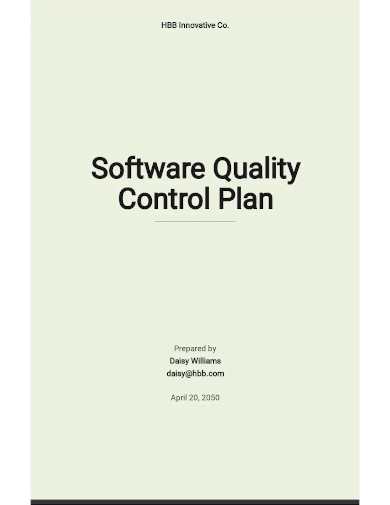
2. Sample Quality Control Flowchart
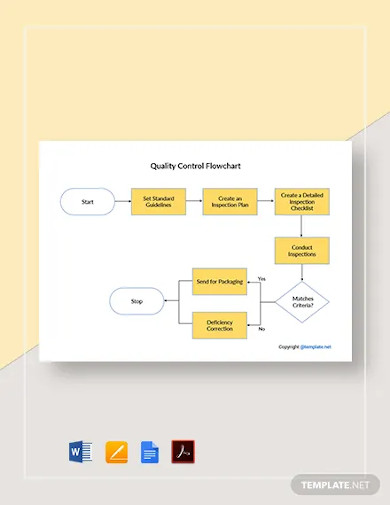
3. Quality Control Checklist
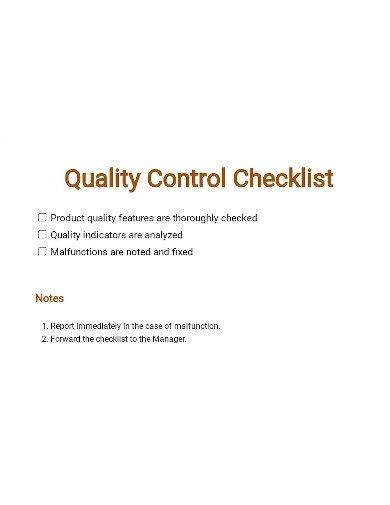
4. Sample Quality Control
5. Quality Control for Digitization Projects
6. Data Quality Control Process
7. Simple Quality Control
8. Basic Quality Control
9. Quality Control Record
10. Quality Control Report
11. Printable Quality Control
What Is Quality Control?
When it comes to commercializing a product, quality control is frequently the last step. Producers conduct a variety of operations during this stage of the manufacturing process, including quality checks and corrections, to ensure that the finished goods meet specified quality standards.
This stage is critical for shipping because it determines whether or not the product is ready for delivery to the customer. Inability to deliver high-quality items tarnishes a business’s reputation, decreases customer retention, and increases return requests.
Additionally, quality control entails inspecting the manufacturing, storage, and distribution processes of a product. A “defective” product is one that does not conform to specified specifications or has been altered in some way. As a result, businesses must establish effective systems to ensure the product’s integrity throughout the supply chain.
A business may be required to implement internal and external quality control measures, depending on the industry and the products distributed by the business. Businesses that communicate via internal protocols frequently employ internal controls. This could include anything from equipment maintenance to employee performance evaluations, and everything in between. Upper management is accountable for the proper and timely execution of quality assurance procedures.
On the other hand, external quality control is required for products sold to third parties. For example, when food is manufactured and distributed, it must undergo third-party inspection to determine its nutritional value and expiration date prior to being sold to market customers.
It is an acronym for Quality Control Plan and refers to a written collection of procedures and actions intended to ensure that goods meet the quality standards specified in contract contracts, other procedures and manuals, and other guidance. QCP is an acronym for Quality Control Plan.
How To Write a Quality Control
- Create an organization chart
To effectively implement each quality assurance method, management must first create an organizational chart that includes job descriptions, business qualifications, and the necessary training. These standards must be documented to establish that inspectors have received sufficient training and are competent. This document should be stored in a secure location and made available to senior management in the event of a problem or error. - Define responsibilities
Following that, management must define the roles and responsibilities of all internal employees as well as those of external affiliates. Each partner should be aware of the processes for which they are accountable, as well as who will be responsible for quality assurance after their work is completed. Except for a few small businesses, the majority of businesses require a dedicated group of individuals to conduct quality control and verification procedures. Separate documentation is required to ensure that sufficient time was allocated to each task, as multitasking may increase the likelihood of human error. Larger corporations, on the other hand, prefer that different members of the same department review their colleagues’ work in a centralized setting. These quality assurance specifications should be precise in order to avoid confusion and to ensure that each step is carried out precisely as specified. - Purchase and receive materials
Management should thoroughly understand the specifications prior to ordering materials to ensure that the components ordered meet the desired quality standards. While pursuing the lowest vendor rates may save businesses money in the short term, it may result in businesses failing to meet quality assurance criteria over time. As a result, it is critical to ascertain the critical characteristics of the material prior to initiating the ordering process. Following receipt of materials, staff should inspect the shipment to ensure that all products conform to the specified standards. If the delivery does not meet the company’s requirements, the items must be returned to the supplier. - Verify Supplier’s Qualifications
While inspecting basic materials is relatively simple, performing quality assurance on more complex components and equipment can be time-consuming and difficult. As a result, before submitting a bid request, businesses should clearly define their requirements and vendor expectations. For instance, businesses may request that a third party audit a vendor in order to ensure that their internal processes adhere to applicable regulations. Then, prior to signing a contract, businesses should assess potential suppliers’ reputation, brand, and qualifications. - Evaluate Quality Feedback
Prior to products being distributed to customers, quality assurance ensures that they meet specified specifications. On the other hand, feedback is a critical tool for improving the performance and overall quality of products. Businesses can determine the benefits and drawbacks of a product by examining online reviews, user complaints, and customer suggestions. Organizations should establish a customer service team that compares evaluations to compliance records in order to determine whether non-compliance contributed to the issue. If an employee discovers that a procedure violates the law, the employee is required to report the violation. - Develop a Process for Corrective Action
Finally, businesses must create an action plan to address quality issues such as regulatory violations and noncompliance. When a non-compliant process is reported, it is the responsibility of the quality control employee to investigate the circumstances surrounding the occurrence. This could be the result of a system failure or the negligence of an employee. Once the root cause has been identified, the company must take preventative measures to ensure that the event does not recur. Additional quality checks or automated tools, such as inventory ordering systems, could be included in this package. Businesses can use quality control plans to ensure that all products meet expected standards and that corrective actions are taken appropriately in the event of a product recall or other consumer complaint. This demonstrates to customers that a business values their input and is committed to providing the highest possible quality products.
FAQs
What are the three types of quality?
Professionals frequently categorize flaws in the quality of a product as minor, major, or critical. Minor flaws are defined as those that account for less than 1% of the total. The nature and severity of a defect are used to determine which category it should be assigned to.
What are action steps?
The term “action steps” refers to the specific actions taken to accomplish the goals outlined in your action plan. Essentially, it comes down to the content of your action plan.
What are the four types of quality control?
Process Control. Control Charts. Product Quality Control. Process Control.
A well-written action plan ensures that your business or corporation’s objectives, as well as your personal goals, are met and exceeded. In other words, it materializes your fantasy. It can assist you in staying on track and avoiding potential roadblocks. The process of developing a high-quality action plan is similar. It enables you to maintain a certain level of product and service quality while also providing an opportunity for continuous improvement.
Related Posts
FREE 9+ Project Management Quality Control Plan Samples in MS ...
FREE 3+ Construction Quality Control Management Plan Samples ...
FREE 10+ Quality Management Statement Samples [ Mission ...
FREE 8+ Product Quality Control Plan Samples in MS Word ...
FREE 13+ Quality Assurance Plan Templates in PDF MS Word ...
FREE 13+ Sample Quality Manuals in PDF
FREE 10+ Quality Assurance Business Plan Samples in MS Word ...
FREE 7+ Construction Quality Control Plan Samples [ Electrical, Site ...
FREE 10+ Quality Assurance Report Samples [ Audit, Monthly ...
FREE 10+ Quality Management Strategy Samples [ Data, Total, Water ]
FREE 10+ Quality Assurance Mission Statement Samples [ Team ...
FREE 9+ Sample Quality Management Plan Templates in MS Word ...
FREE 10+ Quality Action Plan Samples [ Improvement, Assurance ...
FREE 10+ Clinical Quality Management Plan Samples [ Laboratory ...
FREE 10+ Project Quality Assurance Plan Samples in MS Word ...


